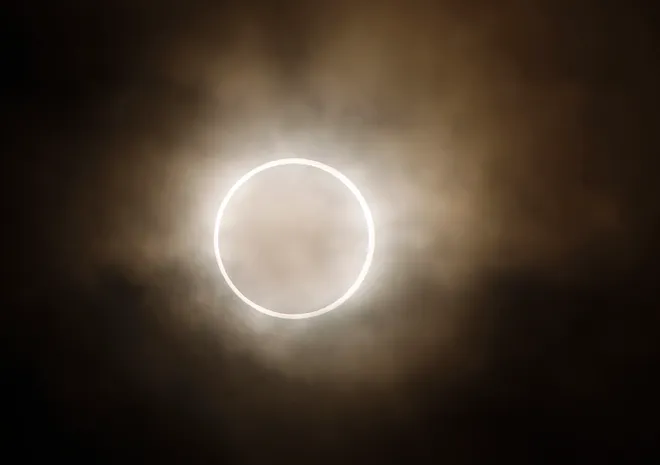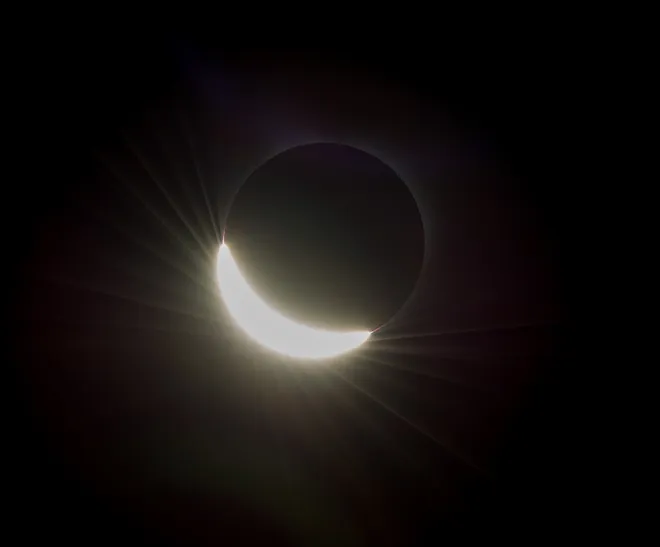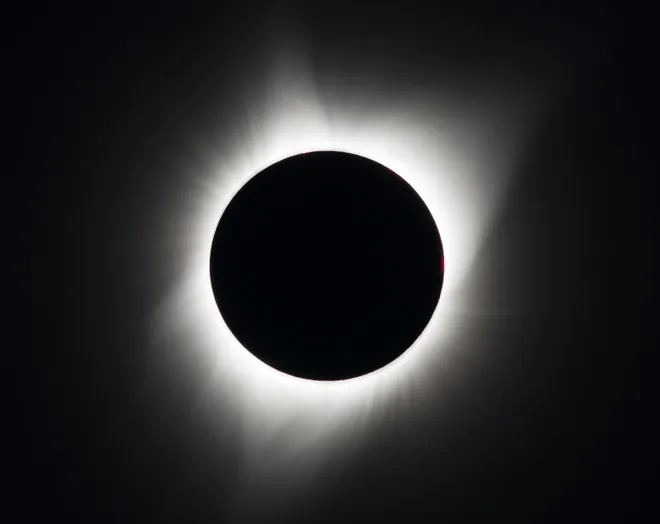What time is the 'ring of fire' solar eclipse Saturday and where can you view it?
A solar spectacle will cross the night sky this weekend when an annular eclipse known as the "ring of fire" appears across the western hemisphere.
Known as the "ring of fire" thanks to shape of circular light created by the partial eclipse, the event is expected to occur this Saturday, Oct. 14, and travel from the coast of Oregon to the Texas Gulf Coast, according to NASA.
The distinct annular eclipse is different from a total eclipse, the next of which is expected to occur in April, and will be the last opportunity for people in the states to catch a glimpse of a ring of fire for a number of years.
Residents of nine states can hope to get a look if the weather is clear, though it is suggested that anyone staring up the sky take proper safety precautions before doing so in order to protect their eyes.
Here's what to know about when, where and how to view this unique celestial event.
October 2023 solar eclipse forecast:Will clouds ruin the view?
When is the 'ring of fire' solar eclipse?

The solar eclipse will begin on Saturday and, weather permitting, first become visible in Oregon around 9:13 a.m. PDT and end in Texas around 12:03 p.m. CDT, according to NASA.
It will then move beyond the U.S. and over Mexico, Central America and finally South America before ending around sunset off of Natal, Brazil in the Atlantic Ocean.
Unfortunately for celestial enthusiasts in the Eastern time zone, the annular eclipse will only be visible in portions of the Pacific, Mountain and Central Zones and is the last of its kind that will be viewable in the U.S. until 2039.
Solar eclipse viewing map:'Ring of fire' solar eclipse is coming to US in October. Here's when (and where) you can see it.
Where can you view the solar eclipse?

The fiery eclipse will be viewable in a handful of U.S. states, including:
- Oregon
- Nevada
- Utah
- New Mexico
- Texas
- California
- Idaho
- Colorado
- Arizona
Here are some projected key times:
- 9:16 a.m. PDT: Eclipse should first become visible near Eugene, Oregon
- 9:19 a.m. PDT: Alturas, California
- 9:21 a.m. PDT: Battle Mountain, Nevada
- 10:26 a.m. MDT: Richfield, Utah
- 10:34 a.m. MDT: Albuquerque
- 11:52 p.m. CDT: San Antonio
After, it will leave the U.S. to pass over Guatemala, Belize, Honduras, Nicaragua, and Panama. It will then move over South America in Colombia before ending off the coast of Northern Brazil.
How to watch an eclipse safely:How to safely watch the solar eclipse: You'll want eclipse glasses or a viewer Saturday
What is the 'ring of fire'?

In general, a solar eclipse is what occurs when the moon passes between the sun and Earth, casting a shadow that blocks the sun's light, says NASA.
Whereas a total solar eclipse happens when the moon completely blocks the face of the sun and a partial eclipse occurs when the sun, moon and Earth do not perfectly line up and create only a partial cover, an annular eclipse is a little more distinct.
Occurring when the moon is at its furthest point from the Earth, an annular eclipse means the sun is not fully covered. Instead, the moon being farther away makes it appear smaller, so when it passes between the sun and Earth it creates the appearance of a smaller disk positioned in front of a larger one.
The smaller, dark moon juxtaposed against the bigger, bright sun creates what looks like a bright ring around the moon as the sun peaks around the edges. This visual effect is where the name "ring of fire" comes from.
Solar eclipses:A spectacular solar eclipse will darken the sky Saturday. Will the one in April be better?
Phases of the annular eclipse
There are multiple phases to an annular eclipse.
First, it begins with the partial phase when the moon begins moving across the sun. It will progressively block more of the sun's light, eventually forming a smaller crescent shape.
About an hour and 20 minutes after this, the annularity phase begins and the moon passes fully in front of the sun, creating the "ring" which lasts about one to five minutes.
The moon will then pass across the sun's face for the next hour and 20 minutes, once again creating a partial eclipse until the moon completely moves past the sun.
Disclaimer: The copyright of this article belongs to the original author. Reposting this article is solely for the purpose of information dissemination and does not constitute any investment advice. If there is any infringement, please contact us immediately. We will make corrections or deletions as necessary. Thank you.







